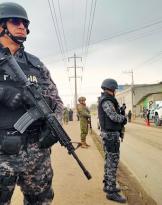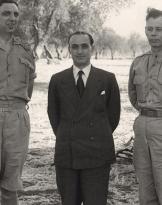On the sidelines of the Navy party, with the ceremony that took place in the port of Civitavecchia, the frigate captain Marco Sciarretta, of the Navy Historical Office, answered two of our questions. The first concerns the history of the raising of the war flag, which took place on the two FREMMs Garibaldi ed Alpine, and on the importance of the action of Premuda as the choice of the date of the 10 June, or the Navy Day.
The flag of war is the element that gives identity to the ship, as a symbol of the homeland, but not only. Because the flag of war accompanies the ship throughout its operational life, both in peace and in war. But the same flag is hoisted only on two occasions: when it is delivered, as happened today, or when the battle is imminent, and therefore in a state of war.
How important is the ceremony of the first flag-raising flag of the war flag?
Our history sums up, in our symbol, from the insignia of the Roman Navy to those of the Maritime Republics, it is a story that goes back over the centuries. The whole sense of that soul of the ship, which is the flag, is perceived when it is blessed and goes on board the unit for the first time. The flag is that of the homeland and it is where the crew swears its loyalty to Italy and to defend the flag to the extreme sacrifice if necessary. In fact, this flag in its symbol takes us back in history, because since the times of the Maritime Republics there had been a flag preserved with particular care, so that it would not be ruined with the sun and the sea air and that it served for be explained in important moments, first among which when the ship had to go into battle. It is therefore an ancient tradition that we renew every time to remember, always and in any case, where we come from and where we want to go.

Traditions that are important in the Navy, as are the dates, because the 10 June, as already mentioned above, represents a very important moment in the history of the Navy: the 10 June 1918, during a normal round-up carried out by the MAS "15" and " 21 ”, commanded by the corvette captain Luigi Rizzo, met, in front of the island of Premuda, the Austrian fleet coming out of the Pola base in the direction of the Otranto canal. Rizzo decided to attack the fleet and succeeded in sinking the battleship Santo Stefano, thus annihilating Austrian hopes of gaining naval supremacy in the Mediterranean. For this reason, therefore, that from the 1939 to the 1942 and from the 1964 to the present day the Navy party occurs every 10 June.
A tradition now consolidated that of 10 June, in memory of the greatest maritime success of the Great War. What was the importance of that business?
In the sea, as the King already said, you go with a stick to give them and a bag to take them. The Navy, however, has always been very aggressive towards the opponent and the Great War on the sea is symbolized by the 10 June which was a fabulous victory, but in fact we can define it as a game played in four moves. The first move was that of defending the army's sea-side, protecting it from both incursions by the enemy and the bombardment of the coasts. The second move was vital, namely to guarantee supply lines and convoys that arrived every day in Italy, allowing them to live and fight in war. As a third move, however, the naval blockade against the Central Powers in the Adriatic is considerable, especially in the fundamental channel of Otranto, which led to the collapse of their economy and, therefore, helped them succeed in the Great War. The fourth phase was the checkmate, one morning at 3.15 in which, at the end of one of the 18mila missions at sea, the lookout observed black smoke on the horizon and, demonstrating the professionalism and technical skills, the commander Luigi Rizzo the moment he saw it he thought they were enemy ships coming out of the port to try to intercept the two MASs. He, instead of moving away, decided to use the night to sneak up on the enemy ships and to fight: the result was to sink an enemy battleship, which together with the Austrian fleet tried to attack the Otranto channel. It is something we remember, as one of our brightest and most important moments.












